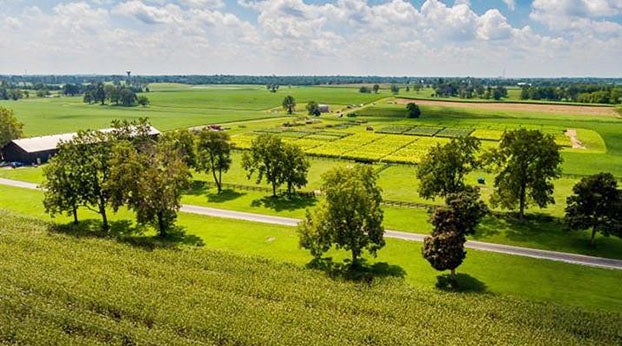EXTENSION NEWS: Breeding season reminders
Published 11:07 am Thursday, May 17, 2018
By Will Stallard
Lincoln County Extension Agent for Agriculture & Natural Resources
It’s May, so beef producers should have their spring breeding season underway with their cattle herds. The cattle should be in good body condition and should have access to a good loose free choice beef cow mineral as adequate mineral levels are important for cows to maintain a pregnancy.
A factor that can really impact pregnancy is the pasture the cattle graze two weeks prior to and during the breeding season. Hopefully, they will be turned out on the best pasture you have during the breeding period. Pastures containing clover or alfalfa are preferred along with those containing orchard grass or low-endophyte fescue. Regular fescue can cause lower pregnancy rates. Use your best grass-legume fields for breeding season to get more cows bred and bred quicker.
A well-managed beef cow/calf herd should in most instances be in a 60 day breeding and calving season. Why a 60 day season? Assuming that calves are to be weaned and perhaps marketed at a single date on the calendar, for every 30 days later a cow will calve, it will cost you about 60 pounds of weaning weight. If a cow gets bred one heat cycle later than would be most desirable, then the cost is 40 pounds in lost weaning weight. That costs you money. To make a 60 day breeding season work, cows need to be in average or better condition and stay on good pasture or if on lower quality pasture they need to be fed 3-5 lbs. of a 12 percent protein grain per head per day. Another consideration is bull power. In a 60 day season, two year old and older bulls should be expected to breed 30 cows. Yearling bulls can handle 15 cows. For many folks the calving season and breeding season is five months to all year. Because you don’t have good size groups to see, you will lose money. You have different ages of calves, so you usually don’t get herd health done in a timely manner. You have to make extra trips to the market. Some tell me they like calves coming all year because it spreads the income out. I would rather have more dollars at one or two marketing’s a year. If you are in the business to make money, then let a short breeding season help you make better profits. Plan to turn the bull in the field with the cows on May 5 and pull him out on July 5 and then keep him fastened up in the bull lot. Plan to pregnancy check you cows so you can market the open cows or move them to a fall group.
Management and observation of bulls is critical during the first few days of the breeding season. This is especially important for young bulls. Mainly, you are looking for indicators of libido and performance. Bull should be observed several times a day until you are sure of the following:
• He is identifying and locating cows in heat
• He is successful in mounting cows
• He is servicing the cow
• That young bulls don’t “fall in love” with one cow and ignore others in heat
• One bull is not over dominated in a multi-sire situation and becomes a punching bag for other bulls
All bulls should be checked for body condition during the breeding season. Extremely thin bulls should be replaced. Young bulls are still growing and often need more energy than the grass can provide. Yearling to two year old bulls should be supplemented with grain during the breeding season. Four pounds of grain daily should be enough.
Manage your bulls properly during breeding season and you will be rewarded with a better calf crop next year. For information on beef breeding management, contact Extension Agent Will Stallard at the Lincoln County Extension Office, 104 Metker Trail, Stanford or by calling our office at (606) 365-2447.



